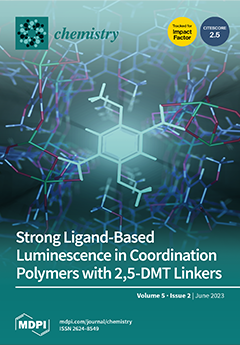Structures of three cocrystals of nootropic racetams were studied. They included two cocrystals of phenylpiracetam (
PPA) with 4-hydroxybenzoic acid (
HBA) with different stoichiometries,
PPA·HBA and
PPA·2HBA, and cocrystal of 2-(4-phenyl-2-oxopyrrolidin-1-yl)-N’-isopropylideneacetohydrazide (
PPAH) with 4-hydroxybenzamide (
HBD),
[...] Read more.
Structures of three cocrystals of nootropic racetams were studied. They included two cocrystals of phenylpiracetam (
PPA) with 4-hydroxybenzoic acid (
HBA) with different stoichiometries,
PPA·HBA and
PPA·2HBA, and cocrystal of 2-(4-phenyl-2-oxopyrrolidin-1-yl)-N’-isopropylideneacetohydrazide (
PPAH) with 4-hydroxybenzamide (
HBD),
PPAH·HBD·(acetone solvate). X-ray study of the pure forms of
PPA and
PPAH was also carried out to identify variations of molecular synthons under the influence of conformers. The cocrystal structures revealed the diversity of supramolecular synthons namely, amide-amide, amide-acid, acid-acid, and hydroxyl-hydroxyl; however, very similar molecular chains were found in
PPA and
PPA·2HBA, and similar molecular dimers in
PPAH and
PPAH·HBD. In addition, conformational molecular diversity was observed as disorder in
PPA·2HBA as it was observed earlier for
rac-PPA that allows for the consideration that cocrystal as an example of partial solid solution. Quantum chemical calculations of
PPA and
PPAH conformers demonstrated that for most conformers, energy differences do not exceed 2 kcal/mol that suggests the influence of packing conditions (in this case
R- and
S-enantiomers intend to occupy the same molecular position in crystal) on molecular conformation.
Full article





